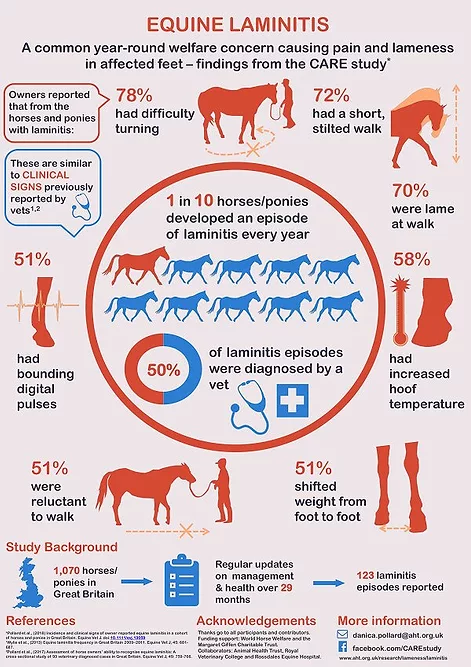New research conducted by the Animal Health Trust in collaboration with Rossdales Equine Hospital reveals that 1 in 10 horses or ponies might develop at least one laminitic episode each year. This occurrence makes laminitis just as common as colic. And just as colic can happen during any season, the study has identified that there is no “safe” period from laminitis, as reported by Phys.org.
The study, which was led by Dr. Danica Pollard, a PhD student at the Royal Veterinary College, observed 1,070 horses and ponies in Great Britain, monitoring their health and management over 29 months. The study encourages owners to stay current on preventative measures year-round, even if owners believe the “high-risk” period is over. Owners should also learn the subtle signs of laminitis, especially when it can be life-threatening.
Common signs reported by owners within the study of the afflicted horses include difficulty in turning, a short or stilted gait or lameness at a walk. These symptoms were present in more than 70% of the laminitic episodes. Less than 25% of the affected animals displayed the classically recognized symptoms such as the laminitic stance of weight bearing deeply in the hind legs and divergent hoof rings, a condition in which the rings are wider at the heel than at the toe. Many owners didn’t report a high digital pulse, a symptom that allows owners to identify laminitis much sooner than the physical manifestations of soreness.
The research also showed that only half of the 123 owner-reported cases of laminitis were confirmed by a veterinarian’s diagnosis. Despite veterinarians considering laminitis a medical emergency, it seems owners don’t share the urgency. Many laminitic horses are then going without initial medical attention. Owners are encouraged to call the veterinarian if they begin to suspect their horse is showing subtle clinical signs associated with laminitis. By the time these subtle signs appear, damage to the hoof already has begun.
The importance of prevention and early detection is emphasized within the conclusion of the study. Owners are encouraged to be vigilant at all times of the year in order to detect laminitic symptoms early on. The earlier the signs are recognized, the sooner the horse can be helped. The goal is to, if not prevent, reduce the damage caused by laminitis.
The next part of the study will be to identify the management and health factors associated with the laminitis developments within this particular population of horses and ponies. Results are expected later in 2019.







